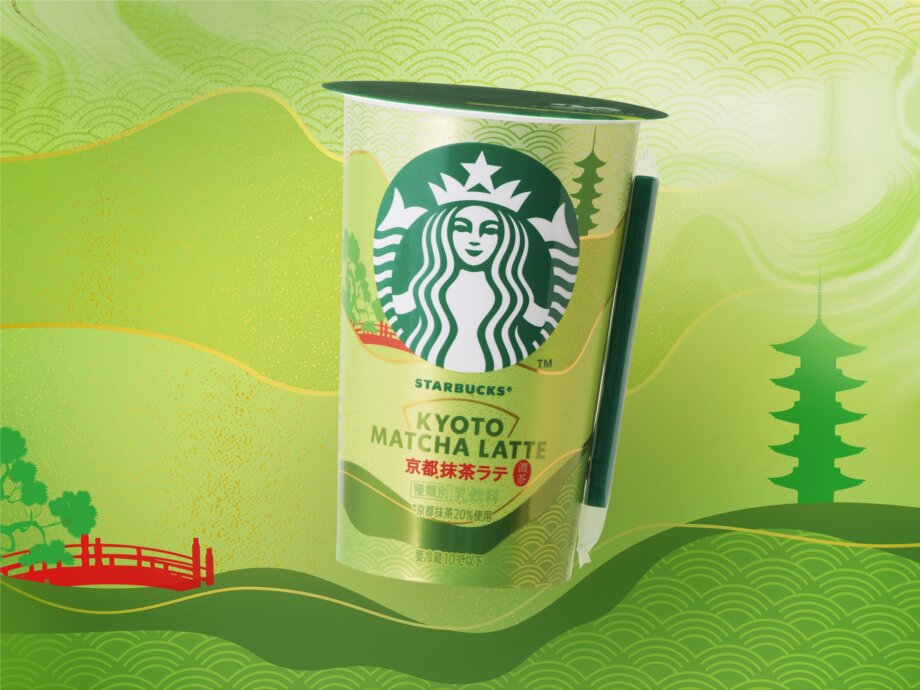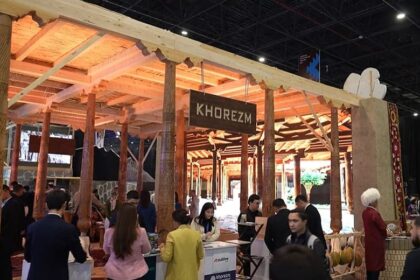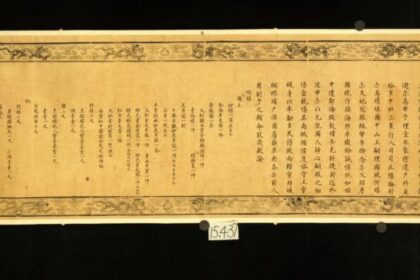Starbucks Kyoto Matcha Latte Returns: A Celebration of Japanese Tradition and Global Matcha Craze
Starbucks Japan has revived its much-loved Kyoto Matcha Latte, marking the 20th anniversary of its chilled cup series. This limited-edition release is more than just a beverage—it’s a cultural moment that bridges Japan’s centuries-old tea traditions with the modern, global fascination for matcha. As the world’s appetite for matcha continues to surge, Starbucks’ latest offering highlights both the enduring allure of Japanese green tea and the evolving tastes of contemporary consumers.
- Starbucks Kyoto Matcha Latte Returns: A Celebration of Japanese Tradition and Global Matcha Craze
- What Makes the Kyoto Matcha Latte Special?
- The Chilled Cup Series: A Japanese Innovation
- Matcha Mania: From Kyoto to the World
- Tradition Meets Trend: The Cultural Debate
- Starbucks and the Japanese Matcha Landscape
- Marketing, Campaigns, and Consumer Engagement
- The Broader Matcha Market in Japan
- In Summary
What Makes the Kyoto Matcha Latte Special?
The Kyoto Matcha Latte first debuted in 2008 as the chilled cup series’ inaugural dessert drink without coffee. Now, for its 20th anniversary, Starbucks has renewed the recipe, increasing the amount of matcha for a deeper, richer flavor while preserving the mellow, creamy taste of carefully selected milk. The result is a well-balanced sweetness that allows the high-quality matcha to shine, offering a distinctly umami profile that is both creamy and refreshing.
The drink’s packaging is a nod to its origins, featuring illustrations of a five-story pagoda and traditional Kyoto gardens rendered in contemporary style. Bright and dark green hues evoke the vibrancy of matcha, while metallic gold accents lend a premium feel. This attention to design reflects Starbucks’ commitment to honoring Japanese aesthetics and culture.
Pairings and Recommendations
Starbucks suggests enjoying the Kyoto Matcha Latte with a tuna mayonnaise rice ball or a steamed cheesecake. The savory notes of the rice ball’s seaweed and tuna are said to enhance the latte’s umami, while the creamy richness of steamed cheesecake complements the drink’s smooth milkiness. These pairings underscore the Japanese approach to flavor harmony, where food and drink are thoughtfully matched to elevate the overall experience.
The Chilled Cup Series: A Japanese Innovation
Starbucks’ chilled cup series, launched in September 2005 in partnership with beverage giant Suntory, was a pioneering move in the world of ready-to-drink coffee and tea. By offering pre-made Starbucks beverages in supermarkets and convenience stores, the company made its signature flavors accessible to a wider audience. The Kyoto Matcha Latte, introduced in 2008, stood out as the first non-coffee dessert drink in the lineup, quickly becoming a fan favorite for its unique taste and cultural resonance.
Over the years, the chilled cup series has become a staple in Japan, with new flavors and limited editions regularly capturing the public’s imagination. The return of the Kyoto Matcha Latte is both a nostalgic revival for longtime fans and an invitation for new customers to experience a taste of Kyoto’s tea heritage.
Matcha Mania: From Kyoto to the World
The revival of the Kyoto Matcha Latte comes at a time when matcha is enjoying unprecedented global popularity. Once a niche ingredient reserved for traditional Japanese tea ceremonies, matcha has become a worldwide phenomenon, appearing in everything from lattes and ice cream to pastries and beauty products. Social media platforms like TikTok and Instagram have fueled the craze, with influencers sharing recipes, reviews, and the vibrant green aesthetics of matcha-based creations.
According to the BBC, the global demand for matcha has soared, leading to shortages and rising prices. In Japan, particularly in the Kyoto region—home to the famed Uji matcha—shops often see their shelves emptied by eager tourists and locals alike. The Japanese Ministry of Agriculture reports that matcha production nearly tripled between 2010 and 2023, and green tea exports rose by 25% last year alone.
The Art and Science of Matcha
Matcha is made from tencha, a type of green tea leaf that is grown in the shade for several weeks before harvest. This shading process boosts the leaves’ chlorophyll content, resulting in the tea’s signature bright green color and rich umami flavor. After harvesting, the leaves are steamed, dried, and ground into a fine powder using traditional stone mills—a labor-intensive process that can yield just 40 grams of matcha per hour.
High-grade matcha is prized for its delicate, complex flavor and is traditionally prepared with water in Japanese tea ceremonies. However, the matcha used in lattes and other culinary applications is often of a lower grade, as the subtle nuances of premium matcha can be lost when mixed with milk or sweeteners.
Tradition Meets Trend: The Cultural Debate
The global matcha boom has sparked both excitement and concern among Japan’s tea experts. Traditionalists worry that the essence of matcha—its ritualistic preparation and mindful consumption—is being overshadowed by its use as a trendy ingredient. Keiko Kaneko, a tea ceremony instructor, describes the traditional practice as a “Zenlike transient moment,” emphasizing the importance of savoring matcha in its purest form.
“The purity and stillness of the ceremony are a world apart from the hectic and mundane, and from the craze for matcha that’s brewing outside the tea house,” Kaneko explains.
Anna Poian, co-director of the Global Japanese Tea Association, suggests that lower-grade matcha should be used for lattes and desserts, reserving the finest matcha for ceremonial use. This distinction helps preserve the integrity of Japan’s tea culture while accommodating modern tastes.
Starbucks and the Japanese Matcha Landscape
Starbucks has played a significant role in popularizing matcha both in Japan and abroad. In addition to the Kyoto Matcha Latte, the company regularly introduces limited-edition matcha drinks tailored to local preferences. For example, the “47 JIMOTO Frappuccino” campaign celebrated Starbucks Japan’s 25th anniversary by offering unique beverages inspired by each of Japan’s 47 prefectures, many of which featured regional ingredients like Uji matcha.
Recently, Starbucks opened its 2,000th Japanese store, Starbucks Ginza House, in Tokyo’s upscale Ginza district. This flagship location includes a Teavana store specializing in premium tea experiences, with exclusive drinks like the Ginza Stone Ground Matcha Tea Latte and the most expensive matcha Frappuccino in Japan. These offerings highlight Starbucks’ commitment to innovation and its respect for Japanese tea traditions.
Exclusive and Seasonal Offerings
Starbucks Japan is known for its creative, limited-time releases that often become social media sensations. This summer, the company introduced the Matcha Green Tea Sparkling and Matcha Pistachio Mousse Tea Latte at select specialty stores, further expanding the possibilities of matcha-based beverages. Such innovations keep the brand at the forefront of Japan’s competitive beverage market, where consumers eagerly anticipate each new release.
Marketing, Campaigns, and Consumer Engagement
To celebrate the return of the Kyoto Matcha Latte, Starbucks Japan has launched a special campaign offering customers the chance to win exclusive prizes. One lucky winner will receive a three-night, five-day trip for two to Seattle—the birthplace of Starbucks—while 100 others will receive a limited-edition charm set commemorating the 20th anniversary of the chilled cup series.
Participation is simple: customers can enter via Twitter or Instagram by following the Starbucks Consumer Packaged Goods account and sharing their favorite chilled cup moments or photos with the campaign hashtag. This interactive approach not only generates buzz but also strengthens the connection between Starbucks and its loyal fanbase.
Availability and Pricing
The Kyoto Matcha Latte will be available at supermarkets and convenience stores across Japan starting September 2, priced at 219 yen (approximately US$1.49). The accessible price point and widespread distribution ensure that both longtime fans and curious newcomers can enjoy this special edition drink.
The Broader Matcha Market in Japan
Japan’s love affair with matcha extends far beyond Starbucks. The market is flooded with matcha-infused snacks and sweets, from traditional daifuku mochi and warabi mochi to modern treats like matcha-flavored chocolates, cookies, and even ice pops. Specialty stores offer a dizzying array of matcha products, catering to both purists and adventurous eaters.
This versatility is part of matcha’s appeal. As Minoru Handa, third-generation chief of Tokyo Handa-en tea store, notes, “Unlike tea leaves, the powder can be easily mixed into just about anything. The health boom and the interest in Japanese culture have added to the momentum.”
Challenges Facing the Matcha Industry
Despite its popularity, the matcha industry faces significant challenges. Climate change, labor shortages, and rising global demand have led to supply constraints and higher prices. In Kyoto’s Uji region, known for producing some of Japan’s finest matcha, heatwaves have reduced harvests, and aging farmers are leaving the industry faster than new ones can replace them. The Japanese government is working to support tea growers with new technology, financial aid, and incentives to switch from regular green tea to matcha production.
Meanwhile, the influx of tourists and the global matcha craze have prompted some retailers to limit purchases to prevent hoarding and ensure fair distribution. The Global Japanese Tea Association encourages mindful consumption and the use of lower-grade matcha for culinary purposes, preserving the highest quality tea for traditional ceremonies.
In Summary
- Starbucks Japan has relaunched the Kyoto Matcha Latte to celebrate the 20th anniversary of its chilled cup series, featuring a richer matcha flavor and a design inspired by Kyoto’s heritage.
- The drink is available nationwide in Japan from September 2, priced at 219 yen, and is accompanied by a promotional campaign offering trips to Seattle and exclusive charms.
- The global matcha boom has led to shortages and rising prices, with Japan’s matcha exports and production reaching record highs.
- Traditional tea ceremony experts urge respect for matcha’s cultural significance, advocating for the use of lower-grade matcha in lattes and reserving premium grades for ceremonial use.
- Starbucks continues to innovate in Japan’s beverage market with exclusive, seasonal matcha drinks and specialty stores like Ginza House, reflecting both tradition and modern trends.
- The matcha industry faces challenges from climate change, labor shortages, and surging demand, prompting calls for sustainable production and mindful consumption.












